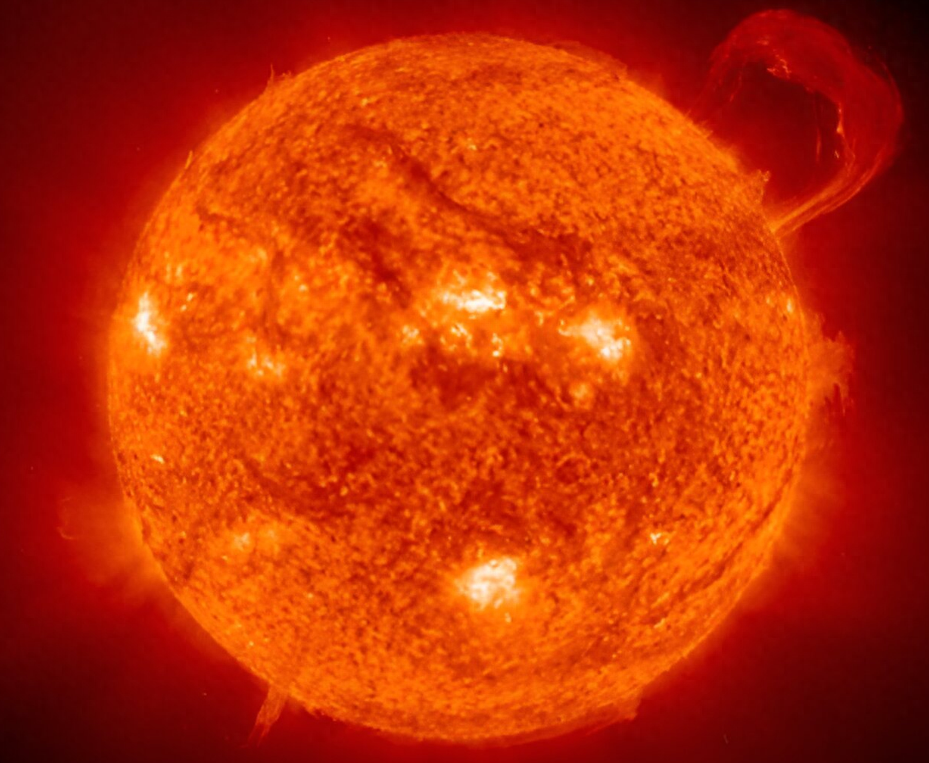

Editor | Cabbage Leaf
Nuclear fusion, the power source of stars, is proposed as the future energy source of mankind and can provide clean and renewable energy, without the radioactive waste associated with current nuclear fission plants.
Like the fusion process that spills energy from the sun, future nuclear fusion facilities will violently slam together isotopes of hydrogen, the lightest element in the universe, in super-hot gas or "plasma" contained in powerful magnetic fields. In the body, helium is produced and energy is collected in the form of mass difference.
Before controllable nuclear fusion can actually occur on Earth, one thing scientists must know is what mixture of hydrogen isotopes to use - mainly "standard" hydrogen, which has a proton in its nucleus and a deuterium nucleus. There is one proton and one neutron in the nucleus, and there is one proton and two neutrons in the nucleus of tritium. Currently, this is done using spectra from prototype tokamak fusion devices, but this analysis can be very time-consuming.
In recent research, Mohammed Koubiti, associate professor at Aix-Marseille Université in France, conducted an evaluation to determine hydrogen isotope ratios for nuclear fusion plasma performance. He combined machine learning with plasma spectroscopy to conduct this research
The research is titled "Application of machine learning to spectroscopic line emission by hydrogen isotopes in fusion devices for isotopic ratio determination and prediction" , published in "The European Physical Journal D" on July 14, 2023.

Future power plants based on magnetic fusion reactions will certainly run on deuterium-tritium (DT) mixtures. However, due to tritium's radioactivity, the proportion of tritium in such mixtures must remain below thresholds set by regulatory agencies for obvious safety reasons.
Currently, tokamak and other devices dedicated to magnetic fusion research typically operate using pure hydrogen (H), deuterium (D) or HD gas mixtures. Although the European Joint Tokamak JET uses DT mixtures in rare cases, in order to comply with the regulatory limits on tritium content, it is necessary to accurately know the amount of tritium in the sealed container. "In terms of performance, the fusion power plant will Operate with a mixture of deuterium and tritium because they work best for fusion, but the amount of tritium must be controlled and tightly managed to comply with the limits imposed by regulatory agencies," Koubiti said. "In addition, it may be necessary to understand the behavior of tritium in real time. content, thereby optimizing the performance of the nuclear power plant."
One way to evaluate this is to determine the isotope ratio T/D T, which represents the tritium density as a percentage of the total plasma density in a deuterium-tritium plasma. Additionally, real-time control of tritium content may be necessary in fusion reactors operated by DT for safety or optimization purposes. In this case, real-time knowledge of the T/D T isotope ratio is required. Standard methods for determining isotope ratios do not allow for real-time application, but artificial intelligence can help.
"The ultimate goal is to avoid the use of spectroscopy, whose analysis is very time-consuming, and replace it with deep learning, or at least combine it with deep learning, to predict fusion Tritium content in plasma." Koubiti explains, "This study is just a step towards this goal. I am still using spectroscopy as a means that allows me to find other features that can be used by deep learning algorithms. Characteristics to predict changes in tritium content in fusion plasmas over time." Associate Professor Mohammed Koubiti discussed machine learning techniques (such as deep learning) combined with current measurements to be used to predict the future Some thoughts on the possibilities of fusion plasma devices. His paper focuses on machine learning in fusion plasma physics to make predictions before future experiments in facilities under construction such as ITER
More precisely, a brief introduction to a method based on the use of Hα A method to use simple spectral features of the /Dα line as input features for deep learning algorithms. The aim is to predict the isotope ratios of hydrogen-deuterium mixtures (HD plasmas) based on the input characteristics described above. Validation of the method was previously done using a set of 200 000 line spectra generated for typical conditions of a tokamak divertor.
Koubiti discusses the transition from generated to observed spectra and the possible extrapolation from HD to DT plasma discharges. Many issues that still need to be addressed are pointed out to achieve robust deep learning-based techniques capable of most accurately predicting physical quantities such as hydrogen isotope ratios in fusion plasmas operating with DT mixtures in future magnetic fusion-based power plants.
The next step is to complete the project by identifying non-spectral features that must be fed to any deep learning algorithm, Koubiti added. Subsequently, he plans to test these findings on several magnetic fusion devices, such as JET, ASDEX-Upgrade or tokamak devices such as WEST and DIII-D, as well as stellarator plasma devices that rely on external magnets to confine the plasma.
Word of mouth mentioned that I also plan to expand the application scope of deep learning technology to the field of non-plasma spectroscopy
Please click the following link to view the paper: https://link.springer.com/article /10.1140/epjd/s10053-023-00719-0
Related reports: https://phys.org/news/2023-09-Machine extraction of hydrogen isotopes-future nuclear energy.html
The above is the detailed content of Machine learning finds the right combination of hydrogen isotopes for future fusion power plants. For more information, please follow other related articles on the PHP Chinese website!




